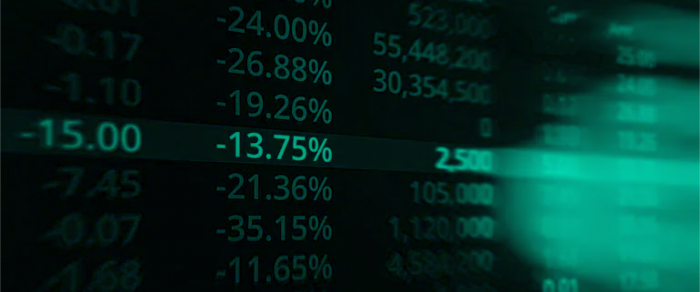Crypto Collapse: Can the Industry Survive?
The FTX collapse will go down in crypto history as one of the most significant crypto collapses ever. It is estimated that from $10 to $50 billion in cryptocurrency was lost due to the failure of one of the most prominent crypto exchanges. As the industry continues to mature, many questions arise about its durability and sustainability. Can it survive this latest setback?
In this article, we will try to understand what happened, how it affected the entire crypto industry, and what the future holds for crypto.
How did the crypto collapse happen?
First of all, what is FTX? FTX is an advanced cryptocurrency derivatives exchange founded in 2019 by Sam Bankman-Fried. The company was valued at $32 billion and became one of the most popular cryptocurrency exchanges in the world.
Who is Sam Bankman-Fried?
Sam Bankman-Fried, FTX’s CEO, made headlines for becoming the world’s youngest self-made billionaire in 2021. He took an aggressive approach to marketing and investing, from running a Super Bowl ad campaign to buying the naming rights for the Miami Heat Arena. His impact was felt beyond his own exchange, as he lobbied for crypto and donated $1 billion to bail out struggling companies during the crypto crash in the first half of 2022.
Long before the catastrophic downfall of the FTX cryptocurrency exchange, Sam Bankman-Fried mentioned his penchant for risk. He said in an interview that some crypto exchanges are “secretly insolvent.” Last year, announcing that his fortune was valued at $10 billion, he added that these were “mostly illiquid” assets. Even when Matt Levine, a Bloomberg financial reporter, suggested during an interview in April that SBF had built a Ponzi scheme, Bankman-Fried didn’t disagree. “I think it’s a pretty reasonable assumption,” he said.
Not only that — SBF’s stance on regulation also caused massive incomprehension in the crypto community. In a Bankless livestream, Sam Bankman-Fried shared his views on the need for cryptocurrency to be regulated in some areas.
Moreover, despite the exchange’s huge success in the last two years and its popularity among industry leaders, FTX has been hit with numerous accusations of unethical behavior, such as trading against its customers, listing tokens from the Solana ecosystem to divest seed round holdings, and splashing the cash on big sponsorship deals. Thus, a few have hailed SBF as the savior of crypto, while others have pointed to the risky and less than transparent practices.
CoinDesk report
It all started with a Coindesk article that stated that Alameda held a position worth $5 billion in FTT, the native token of FTX.
It was clear from the story that Alameda Research, Sam Bankman-Fried’s hedge fund, was closely intertwined with FTX. According to a CoinDesk article, nearly 40% of Alameda’s $14.6 billion assets were in FTT, and an additional $1 billion was in SOL. Additionally, Alameda’s liabilities totaled around $8 billion. In fact, FTT was the backbone of Alameda’s liabilities, and there is almost a nonexistent separation between the hedge fund and FTX.
The news of Bankman-Fried’s companies’ insolvency caused a stir in the cryptocurrency industry. People wondered if Alameda could face liquidation on positions if the value of their collateral fell and how closely connected FTX and Alameda really are.
However, the big blow for cryptocurrency was just ahead. After a CoinDesk article, Changpeng Zhao, the CEO of the biggest crypto exchange in the world, Binance, announced on November 6th that Binance was liquidating all its investment in FTX.
Beginning of the end
The news caused shockwaves in the market, resulting in a sharp decline in the price of FTT from $22 to $14 in a short time. However, there were many who remained confident that FTX would weather the storm and that customer funds were not at risk from any potential trading losses. It was thought that this was simply a liquidity issue that would pass in the short term. Despite this, trades started to pull their funds out of FTX and liquidate FTT tokens.
On November 7th, FTX halted withdrawals, creating a wave of panic among crypto traders, as halting withdrawals during a liquidity crunch is generally considered a no-no in the cryptocurrency world. SBF tried to calm the situation by assuring that they were just dealing with an immense amount of capital outflows; however, withdrawals were soon halted again. This caused FTT to continue dropping in value. Hours passed by as the crypto community anxiously anticipated an explanation from SBF, who had gone silent on Twitter.
In a surprising move, on November 9th, Binance made headlines when it announced plans to acquire the struggling FTX exchange. The initial news of Binance’s potential purchase of FTX had crypto traders and investors buzzing with excitement, but their hopes were quickly dashed when the announcement came on the next day that the deal was off — after due diligence, Binance came to the conclusion that the situation with FTX was catastrophic, as there was a $9.4 billion hole.
In a shocking revelation, it emerged that Alameda had imploded this summer during the Three Arrows Capital fund collapse, and FTX customer funds were used to patch the leak. Not only was this illegal, but it also posed a great risk to customers as the funds were not accurately reflected on Alameda’s balance sheet. Instead, FTX tokens were listed as equity on their financial statements.
The end
The situation became pure chaos.
Big and prominent figures in the industry criticized and blamed SBF, a huge number of investors lost money, and the FTT token lost almost all its value. The Bahamian authorities have launched an official investigation into possible criminal wrongdoing in connection with the implosion of the company.
On November 11th, the FTX crypto exchange filed for bankruptcy for Chapter 11. The bankruptcy filing states that FTX owes between $10 billion and $50 billion. The extent of the company’s debt is staggering.
The impact of FTX’s collapse on the crypto industry
The repercussions of FTX’s downfall are far-reaching for sure. Galaxy Digital reported a staggering $76.8 million loss due to their exposure to FTT; BlockFi, a major crypto lender, had to temporarily halt withdrawals — and filed for bankruptcy as a result. And these are only a few examples of companies in the sphere affected. Many traditional investors have also been burned.
Moreover, many centralized exchanges saw a massive outflow of capital from their platforms as crypto traders and investors bailed out in fear of potential fraud.
In order to convince users that their cryptocurrency reserves are fully backed by the assets they claim to hold, many exchanges have begun publishing “proof of reserves” audits. Audits like these should provide added assurance and transparency to users who trust these exchanges with their investments.
The overall crypto market experienced a sharp decline, with Bitcoin and Ethereum prices dropping by more than 20%. The Solana digital coin, which had been favored by Bankman-Fried’s trading firm Alameda Research, plummeted by more than 68%. Even Tether’s stablecoin, a go-to safe haven for many investors, has broken its one-to-one peg to the US dollar.
JPMorgan analysts predict that Bitcoin could reach as low as $13,000 or even below $10,000 — a level not seen since 2020. This would constitute a potentially largest decrease in its value.
How will this affect the future of crypto?
It is difficult to forecast how this crypto collapse will affect the industry in the long run. This event has put a spotlight on the risks of trading on centralized exchanges, and it has also raised many questions about security, transparency, and regulatory oversight.
The fall of FTX has been a major wake-up call for the cryptocurrency industry, prompting many prominent voices in the sector to demand greater regulatory oversight. It is expected that more stringent regulation will help bring back consumer trust and confidence in crypto assets, as well as ensure the safety and security of funds stored on centralized exchanges. Gary Gensler, head of the US Securities and Exchange Commission, already said investors “need better protection,” and crypto space needs more regulations.
Moreover, it is already evident that many investors turned away from the crypto sector. This could make it harder for the industry to gain mainstream acceptance, and there may be a period of uncertainty while the dust settles.
The “crypto winter” is set to intensify, too, as investors become increasingly wary of economic uncertainty and shy away from high-risk investments. This could spell trouble for the already volatile cryptocurrency market and send prices to a new crypto bottom.
At the same time, this event has also highlighted the importance of decentralized finance (DeFi) and its potential benefits. With DeFi, there is no central point of failure, and the security of funds is greatly enhanced. In the post-FTX era, it is likely that we will see a greater emphasis on DeFi protocols and their ability to offer a more secure way to store funds.
So will the industry survive?
The answer, like with most things in the crypto space, is unclear. The bankruptcy of FTX has wide-ranging effects and could have a significant impact on the Bitcoin future and the future of the overall industry. But if the sector can learn from this event and make necessary changes, then it may yet prevail. Only time will tell.
But one thing is sure: The fall of FTX is a stark reminder of the risks associated with cryptocurrency trading and investing, and it has provided an invaluable lesson on the importance of financial literacy and vigilance in every financial market.



